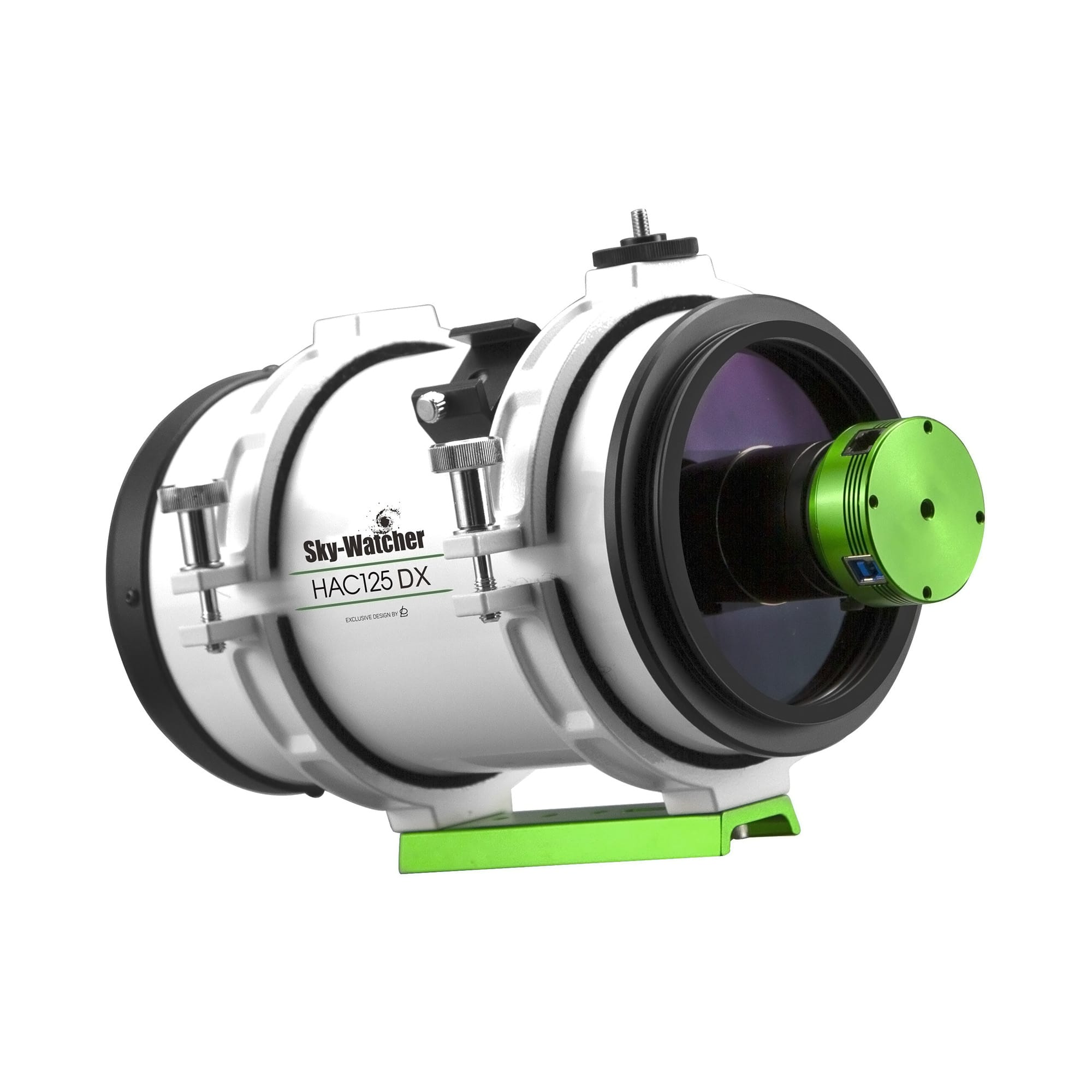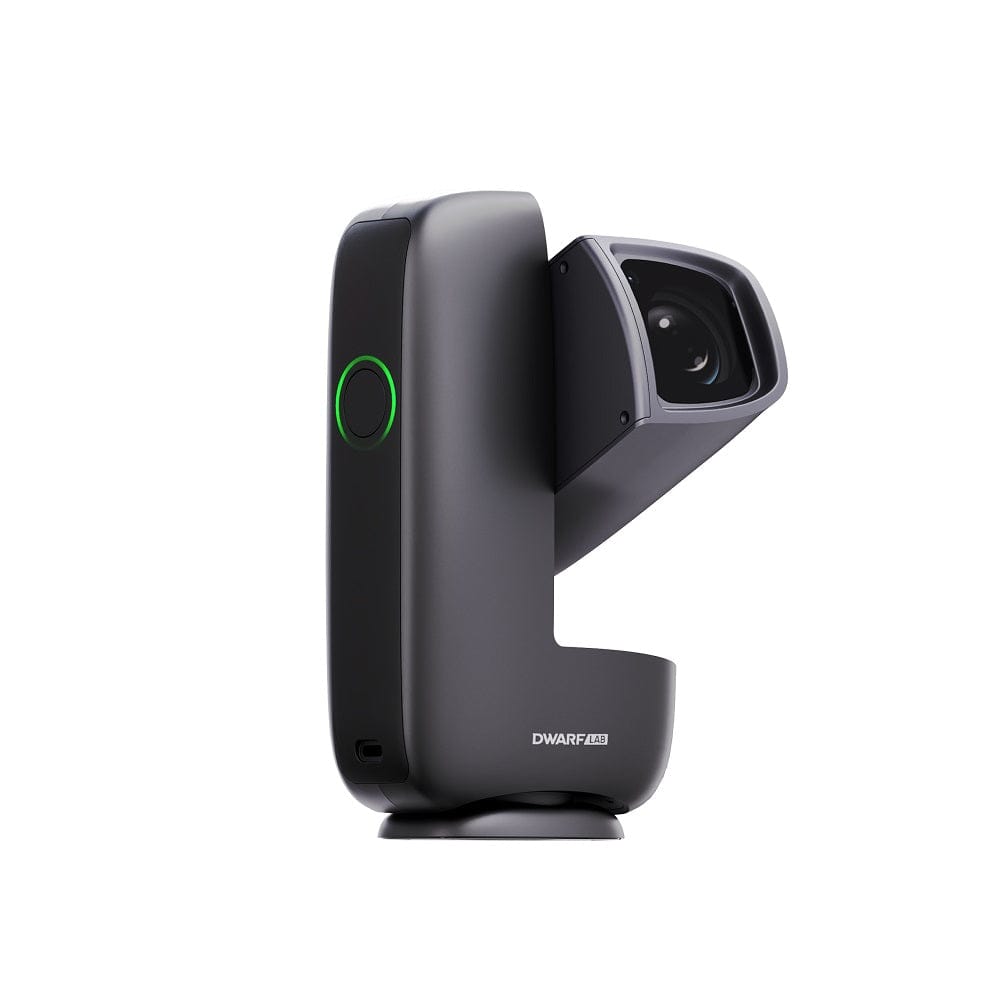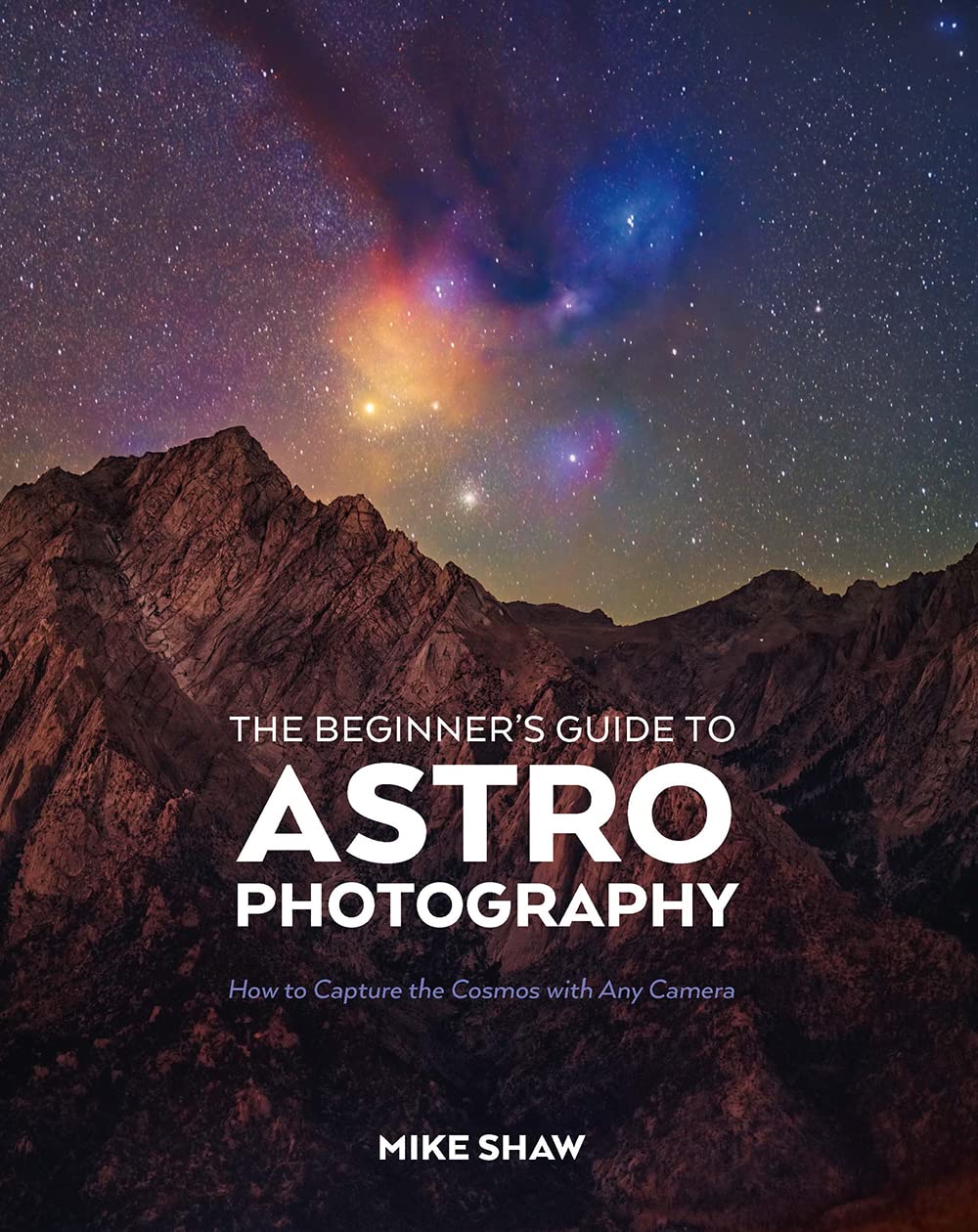The Sky-Watcher HAC125 DX Minigraph isn’t just another compact telescope—it’s a purpose-built f/2 astrograph designed to deliver sharp, wide-field images. This updated DX version corrects the limitations of the original model with a completely reengineered rear focusing system, imaging circle, and improvements that cater to portability. With a 125mm aperture and a fast 250mm focal length, it’s suited for deep-sky enthusiasts using cameras like the ZWO ASI533MC.
Overview
Ultra-fast f/2 optics: Capture more data in less time, reducing or even eliminating the need for autoguiding.
Upgraded rear focusing system: Provides precise focus with better camera compatibility and support for future motorisation.
Compact and travel-friendly: At just under 4kg and 40cm long, it’s easy to pair with lightweight mounts.
Improved dew shield and cable routing: Simplifies setup and flat-field calibration.
Limited image circle: Best matched with small-sensor cameras; not suitable for visual use or full-frame sensors.
Build Quality and Design
The HAC125 DX features a unique Honders Advanced Catadioptric design, combining refractive and reflective elements in a sealed optical tube. The primary Mangin mirror—coated on the rear surface—delivers high reflectivity and reduced chromatic aberration, akin to triplet refractor performance in a folded optics design.
Build quality is solid, with a durable metal tube and well-machined accessories. The telescope comes with clamshell tube rings, Vixen-style dovetail, dew shield, and three camera adapters (1.25-inch, male and female T-thread). The dew shield now uses a dovetail clamp rather than threads, making it easier to remove and reinstall. A small rubber port has also been added for clean cable routing, which helps maintain a flat surface for flats and avoids cable snagging during imaging.
The primary mirror cell can be easily collimated using push-pull hex screws—an unusual but welcome feature in such a compact astrograph. According to field testers, collimation can be achieved using a simple laser collimator or star test.

Performance in the Field
The HAC125 DX is designed strictly for imaging. There’s no provision for visual observing—this is a true astrograph in every sense. Its standout specification is the f/2 focal ratio, meaning you can achieve results in a fraction of the exposure time required by slower systems.
Image quality is impressive when paired with small-sensor cameras. The 16mm image circle is best suited to cameras like the ASI533MC or ASI585MC, which deliver crisp, colour-corrected images without field curvature or coma. Larger sensors are not supported—users looking to use APS-C or full-frame sensors should look elsewhere.
Thanks to the upgraded rear helical focuser, users can achieve critical focus without the awkward front-end adjustments of the previous model. Although there’s no motor focus option out of the box, Sky-Watcher has added rear mounting holes to support motorisation, and a standard helical knob offers smooth manual control in the meantime.
During testing, Sky-Watcher’s product team noted that the primary focuser showed no perceptible image shift. This is especially useful for narrowband or long integration sessions, where focus stability is essential.
Choosing the Right Camera
Due to the restricted 16mm image circle and short back-focus (12.5mm), camera pairing is critical. Sky-Watcher includes adapters for 1.25-inch barrels, male T-thread, and female T-thread connections. These are ideal for small CMOS cameras—particularly those from ZWO’s IMX533 and IMX585 series.
A one-shot colour camera like the ASI533MC Pro is an excellent choice, it simplifies setup and removes the need for filter wheels. While it is possible to use a 1.25-inch filter in front of the camera, a filter drawer or wheel is not recommended due to the tight back-focus tolerance.
Those planning to use narrowband filters should ensure they fit directly into the camera nosepiece or are integrated into the optical train in a way that respects the short spacing.
Strengths and Limitations
The HAC125 DX Minigraph stands out as a well-designed, ultra-fast astrograph tailored to modern imagers using small-sensor CMOS cameras. The optical performance is commendable, and the mechanical upgrades make it significantly easier to use than its predecessor.
That said, its use case is narrow. It’s not designed for visual astronomy, nor can it accommodate larger sensors or extensive accessories like filter wheels or rotators. But for those looking for a fast, lightweight, wide-field imaging solution, the HAC125 DX hits the mark.
Final Verdict
A fun, fast, and surprisingly capable telescope, the HAC125 DX is ideal for travelling astrophotographers and quick imaging sessions. Just be mindful of its image circle limitations, and you’ll be rewarded with outstanding wide-field images in record time.




